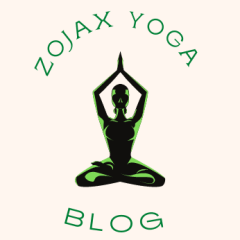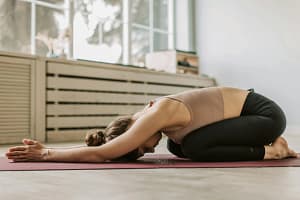Because of the rapid speed of today’s world, we are all under stress. Whether it is from a professional connection or a personal issue, stress can have an impact on our physical or mental health. “Yoga for Stress Relief” is a tried-and-true method for de-stressing. You may read about different yoga poses that reduce stress, how to incorporate yoga into your daily routine, and other ways to relieve stress using yoga here.
Understanding Stress
We must first comprehend what stress is and how it impacts our body. Stress is a typical reaction to danger or difficulty. Our bodies release the hormones cortisol and adrenaline when we are under stress. The “fight or flight” signal is transmitted to humans by these hormones. Prolonged stress can result in a variety of diseases, including anxiety, depression, high blood pressure, and heart disease.
How Yoga Can Help
- Yoga is a kind of exercise that incorporates breathing techniques, meditation, and physical postures. Regular yoga practice can aid in decreasing cortisol levels and fostering the relaxation response, which combats the stress reaction. Here are a few ways that yoga can reduce stress:
- Reduces Muscle Tension: Stress can cause muscle tension, which can lead to headaches, neck and back pain, and other physical discomforts. Yoga postures, also known as asanas, help stretch and release tension from the muscles, promoting relaxation.
- Calms the Mind: Yoga breathing exercises, or pranayama, help regulate the breath and calm the mind. This can help reduce anxiety and promote feelings of peace and tranquility.
- Improves Sleep: Stress can disrupt our sleep patterns, making it difficult to fall asleep or stay asleep. Yoga can help improve the quality of sleep by promoting relaxation and reducing anxiety.5.
- Improves Mood: Yoga has been found to raise GABA levels, a neurotransmitter that is important for controlling mood. Regular yoga practice helps lessen anxiety and depressive symptoms.
- Develops Mindfulness: Mindfulness is the skill of being in the present and conscious of one’s thoughts and feelings without passing judgment. Yoga meditation can aid in the development of awareness, which can lessen stress and advance general wellbeing.

How to Incorporate Yoga into Your Daily Routine
- Now that we’ve explored the benefits of yoga for stress relief, let’s look at how to incorporate yoga into your daily routine. Here are some steps you can take:
- Set aside time: Schedule a specific time for yoga practice each day. This could be in the morning, before bed, or during your lunch break.
- Start small: Begin with simple yoga postures and breathing exercises. As you become more comfortable, you can gradually increase the intensity and duration of your practice.
- Find a teacher: Consider taking a yoga class or finding a qualified yoga teacher to guide you through your practice.
- Create a comfortable space: Find a quiet, clutter-free space in your home where you can practice yoga without distractions.
- Be consistent: Make yoga a part of your daily routine and practice regularly.
Consistency is key when it comes to reaping the benefits of yoga for stress relief.
Yoga is an effective way to minimize stress that can improve your mental and physical health. Regular yoga practice can increase mental and physical relaxation, better sleep, happiness, and more awareness. You can control your stress and improve your general health by including yoga into your daily routine. So, roll down your mat and get moving right away!
5 Yoga poses for stress relief
Yoga has been shown to be an excellent method of lowering stress and enhancing overall health. Here are the best yoga poses for reducing stress, along with instructions on how to do each one correctly.
1. Child’s Pose (Balasana)
The Child’s Pose is excellent for reducing stress because it promotes both physical and mental calm. Kneel on the ground with your big toes touching and your knees wide apart to begin in this posture. Stretch both your arms in front, bringing down your head to the floor, lean back on your heels. Then you take a few long, deep breaths, and feel the stress in your body start to melt away.
2. Downward-Facing Dog (Adho Mukha Svanasana)

Image by karlyukav on Freepik
The downward-facing dog is another excellent yoga pose for reducing stress levels since it expands the spine and eases back and neck pain. Start on your hands and knees, your knees have to be aligned with your hips and your wrists placed squarely beneath your shoulders. While pushing your hips up and back, straighten your arms and legs. Hold this posture for a few long, deep breaths while you see the tension leave your body.
3.Standing Forward Bend (Uttanasana)

Image by yanalya on Freepik
The Standing Forward Bend is a fantastic stress-relieving pose since it helps to relax the back, shoulders, and neck. Standing with your feet hip-width apart, bend forward from the hips while maintaining a straight spine to achieve this position. Hold this pose for many long breaths while placing your hands on the floor or on your shins.
4.Bridge Pose (Setu Bandhasana)

Image by yanalya on Freepik
Because it expands the chest and softens the shoulders and neck, the Bridge Pose is great for lowering tension. Lie on your back with your legs bent and your feet flat on the floor. Press your feet hard into the ground, also your shoulders into the floor, your hips lift to toward the ceiling. Hold this yoga pose and take many deep breaths.
5.Corpse Pose (Savasana)

Image by yanalya on Freepik
A great method for lowering stress is the Corpse pose. It supports body and mind relaxation.. Lay on your back with your arms and legs extended and your hands open. Take a few calms, deep breaths through your nose while closing your eyes. Allow your entire body to relax into the floor by allowing it to become soft and heavy. Feel the entire body rising and falling with each breath as it begins to relax.
Conclusion
Yoga is a successful practice for lowering stress and enhancing your overall health. Practicing these five yoga poses on a daily basis; you may lower physical tension and calm your mind. Before beginning any new exercise program, keep in mind to take deep breaths, pay attention to your body, and always seek medical guidance.
Read more: Yoga for Stress Relief
FAQ PAGE about The Ultimate Guide to Yoga for Stress Relief
What is yoga for stress relief?
Yoga for stress relief refers to the practice of specific yoga techniques and poses that help reduce stress, calm the mind, and promote relaxation. It involves a combination of physical postures (asanas), breathing exercises (pranayama), and meditation.
How does yoga help in relieving stress?
Yoga helps in relieving stress by activating the body’s relaxation response, reducing the production of stress hormones like cortisol, and promoting a sense of calm and well-being. The physical postures and controlled breathing in yoga stimulate the parasympathetic nervous system, which counteracts the body’s stress response.
How often should I practice yoga for stress relief?
The frequency of your yoga practice for stress relief depends on your personal preferences and schedule. Ideally, aim to practice yoga at least 2-3 times per week to experience its benefits. Consistency is key, so finding a routine that works for you and sticking to it will yield better results. Even short daily sessions of 15-20 minutes can be beneficial.
Can yoga for stress relief be practiced at home?
Absolutely! Yoga for stress relief can be practiced in the comfort of your own home. There are numerous online resources, videos, and apps available that provide guided yoga sessions specifically designed for stress relief. Creating a calm and inviting space, using props if needed, and setting aside dedicated time for your practice can help enhance the experience.





